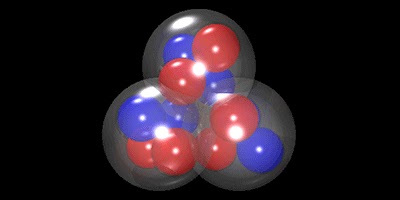In
my previous blog post Nature Seems to Love the Number Three, I
pointed out that when we look at the most fundamental aspects of
nature, we find that the number three seems to occur an unusually
high number of times. Some examples are given in the visual below. We
have cases where there are exactly three types of some fundamental
part of nature: for example, three types of massive bosons, three
types of neutrinos, and three types of subatomic forces. We have
cases in which fundamental parts of nature are made of three smaller
particles; for example, the fact that protons are made of three
quarks. We also have a fundamental unit of charge (the electron
charge) that is exactly three times greater than another fundamental
unit of charge (the Down quark charge). Threes, threes, threes.
Pythagoras (the ancient philosopher mathematician fascinated with the
number 3) would be happy.
Now
scientists may have found yet another example of a three in the
fundamental layout of nature. The latest discovery is one that would
really make Pythagoras jump for joy, as it involves his favorite
piece of geometry: the triangle.
The carbon-12 nucleus is the nucleus of the most common isotope of carbon, the element on which earthly life is based. Every type of nucleus except the hydrogen nucleus consists of protons and neutrons. Scientists have usually thought of a carbon nucleus as being a bunch of protons and neutrons all stuck together, rather like the image below:
But apparently the carbon-12 nucleus consists instead of three little clumps arranged in an equilateral triangle, with each clump consisting of two neutrons and two protons. Below is a highly schematic diagram (the distance between the three clumps may be much greater).
Martin Freer/University of Birmingham
Nature apparently manages to preserve this perfect triangle, even though the carbon 12 nucleus is spinning madly.
The equilateral triangle has always been considered the simplest and most perfect shape in nature. Pythagoras and his followers would wax eloquent about the transcendental significance of equilateral triangles and the number three.
So
does the discovery of a perfect equilateral triangle in the structure
of the most fundamental nucleus of life have some deeper
significance?




No comments:
Post a Comment